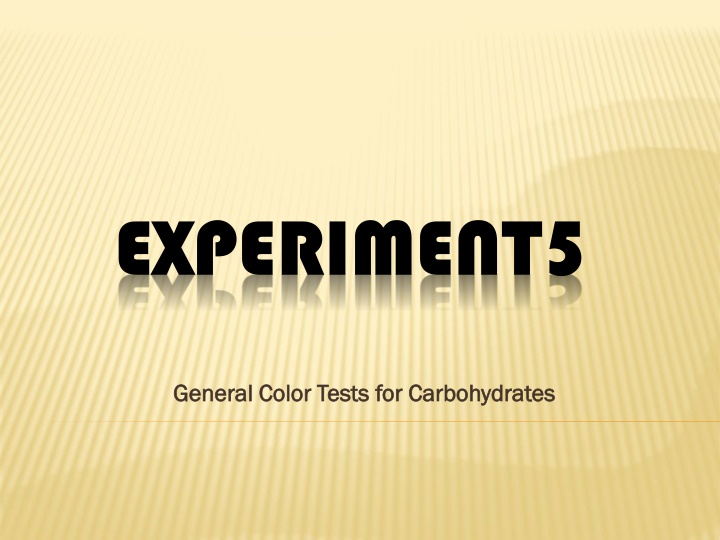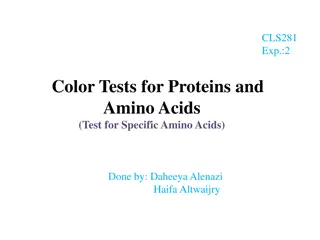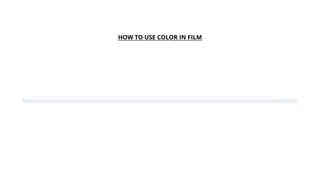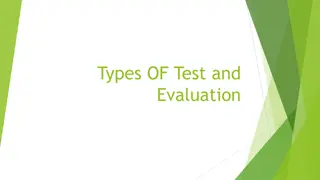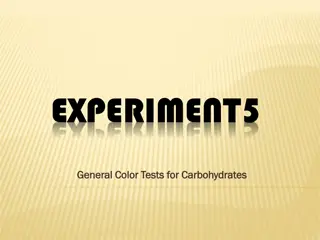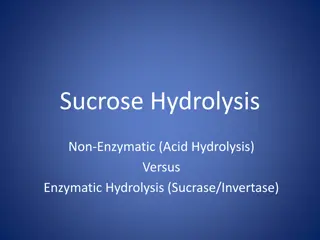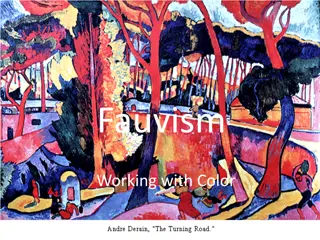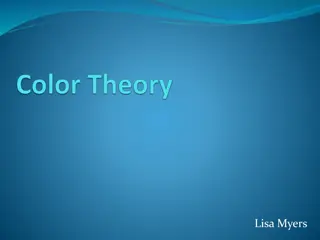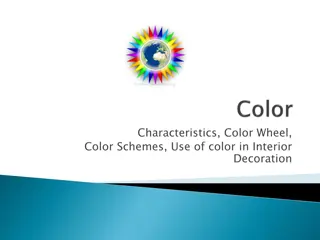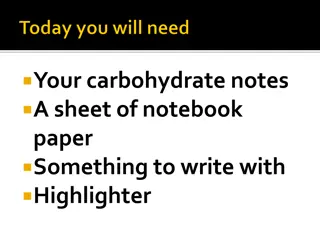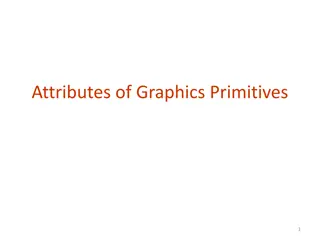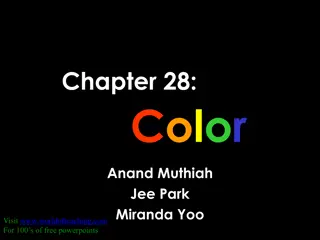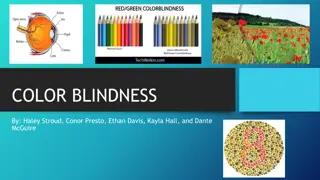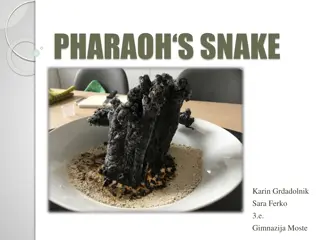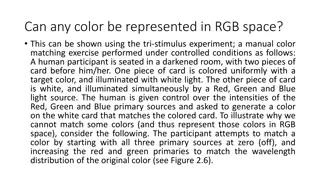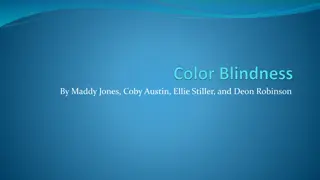Carbohydrate Color Tests Experiment Summary
This experiment explores color tests for carbohydrates, specifically the Molisch and Anthrone tests. The Molisch test is a general test for carbohydrates using concentrated sulfuric acid, while the Anthrone test involves the formation of a blue-green complex with carbohydrates. The presence of a purple ring indicates the presence of carbohydrates. Detailed procedures and principles are provided along with images for better understanding.
Download Presentation

Please find below an Image/Link to download the presentation.
The content on the website is provided AS IS for your information and personal use only. It may not be sold, licensed, or shared on other websites without obtaining consent from the author.If you encounter any issues during the download, it is possible that the publisher has removed the file from their server.
You are allowed to download the files provided on this website for personal or commercial use, subject to the condition that they are used lawfully. All files are the property of their respective owners.
The content on the website is provided AS IS for your information and personal use only. It may not be sold, licensed, or shared on other websites without obtaining consent from the author.
E N D
Presentation Transcript
EXPERIMENT5 General Color Tests General Color Tests for Carbohydrates for Carbohydrates
An aldose differs from a ketose in that it has a carbonyl group at the end of the carbon chain instead of in the middle
GENERAL COLOR TESTS FOR CARBOHYDRATES 1/MolischTest: 2/ AnthroneTest:
1/Molisch Test: *It is a general test for carbohydrate. *It is effective for any compound which can be dehydrated to furfural or a substituted furfural (such as hydroxymethyl furfural) by concentrated sulfuric acid. *If the carbohydrate is an oligosaccharide (e.g. disaccharide, trisaccharide etc) or a polysaccharide, the hydrolysis of the carbohydrate acetal linkage occurs simultaneously with the dehydration reaction (in polysaccharide the color develops slower).
1.MolischTest PRINCIP PRINCIPL LE: E:
*The purple ring color is due to condensation products of furfural or it's derivatives with -Naphthol. Showspositivetestfor: Allcarbohydrates. Monosaccharidesgive a rapidpositivetest. Disaccharidesandpolysaccharidesreactslower. *A negative result by this reaction is a very good evidence of the absence of carbohydrates, but a positive test is indication to the probable presence of carbohydrate. *Thymol may be used as a reagent instead of -Naphthol. *Thymol is more stable than -Naphthol, and can be applied to insoluble carbohydrates like cellulose or wood.
PROCEDURE Tube1 Tube2 Tube3 0.5% starch 10 drops 0.5% sucrose 10 drops 0.5% glucose 10 drops Water 2 ml 2 ml 2 ml -Naphthol 2 drops 2 drops 2 drops Mix Con. H2SO4 3 ml 3 ml 3 ml A purple ring at the interface is indicative of acarbohydrate.
NEW PROCEDURE Tube1 2 Tube3 Tube 0.5% starch 2 ml 0.5% sucrose 2 ml 0.5% glucose 2 ml -Naphthol 2 drops 2 drops 2 drops Mix Con. H2SO4 2ml 2ml 2ml A purple ring at the interface is indicative of acarbohydrate. Incline the test tube slowly and carefully add 3ml of concentrated sulfuric acid down the side of the tube to form a layer below the sugar solution.
2/ Anthrone Test: *It is another general test for carbohydrates. *Based on similar reactions in which anthrone is used instead of - Naphthol in Molisch test to form the color product (green to blue green color). *It is very sensitive, it will give a positive reaction with filter paper (cellulose).
*It can be used for quantitative determination of glycogen and sugar of blood. *It can be used as qualitative test, since different sugars dehydrate at different rates and produce a variety of colors.
JUST FOR YOUR INFORMATION Furfural is an organic compound derived from a variety of agricultural byproducts, including corncobs, oat, wheat bran, and sawdust. The name furfural comes from the Latin word furfur, meaning bran, referring to its usualsource. It is not a carbohydrate.
PROCEDURE: Tube1 Tube2 Tube3 Tube4 Filterpaper Small piece 0.5 1drop starch % 0.5%sucrose 1drop 0.5%glucose 1drop Blank 1drop Water 1ml 1ml 1ml 1ml Anthrone reagent 3ml 3ml 3ml 3ml Heat for 3 mins in boiling water bath. Green to blue green =positive.
